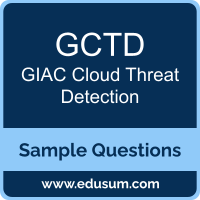01. Why is it important to continuously update cyber threat intelligence in a cloud environment?
a) To avoid upgrading cloud infrastructure
b) To ensure that security teams are aware of the latest threats and vulnerabilities specific to cloud services, allowing for timely defenses against emerging attacks
c) To reduce the cost of cloud services
d) To minimize cloud storage usage
02. Your organization uses Azure Application Gateway to manage traffic for a web application. Recently, you have noticed multiple failed login attempts and potential brute-force attacks targeting the application. What should you review in the logs to further investigate the issue, and what actions should you take?
a) Ignore the logs and wait for more failed attempts
b) Disable logging and restart the application
c) Review Application Gateway logs for repeated failed requests, identify suspicious IP addresses, implement IP address blocking, and configure rate-limiting policies to mitigate future attacks
d) Increase the capacity of the Application Gateway to handle the additional traffic
03. What is a key benefit of using containers in a cloud environment?
a) Containers are tightly coupled to the underlying infrastructure
b) Containers allow for greater portability and consistency across development, testing, and production environments
c) Containers consume more resources than virtual machines
d) Containers are not scalable
04. Which AWS service allows security teams to define and enforce compliance policies through automated workflows that respond to policy violations in real time?
a) AWS Config
b) AWS CloudTrail
c) Amazon RDS
d) AWS Lambda
05. During a vulnerability assessment, what is the purpose of analyzing permissions assigned to cloud resources and services?
a) To increase user access levels
b) To identify and address overly permissive access controls that may expose resources to unauthorized users
c) To reduce the number of users in the environment
d) To eliminate the need for encryption
06. In a containerized environment, what is the primary function of namespaces?
a) To control which network protocols can be used
b) To monitor resource usage
c) To provide isolation for containers by limiting their visibility into other containers and the host system
d) To encrypt container traffic
07. When investigating an AWS security breach, which of the following would be the best place to start?
a) Amazon S3 bucket logs
b) Reviewing CloudTrail logs to identify any unauthorized API calls or unusual activity
c) AWS billing dashboard
d) Disabling all AWS services
08. How does log centralization improve the overall security of a cloud environment?
a) It allows for the consolidation and correlation of logs, improving the detection of security incidents and reducing the time required for investigation
b) It reduces the storage space required
c) It increases the number of logs generated
d) It improves cloud service billing
09. What is the role of cyber threat intelligence (CTI) in enhancing cloud security monitoring?
a) To predict billing cycles
b) To provide insights into emerging threats and attack vectors specific to cloud environments, enabling more effective monitoring and defense
c) To reduce the number of cloud resources used
d) To eliminate the need for incident response teams
10. Why is it important to monitor data retention policies in cloud storage environments?
a) To ensure compliance with regulatory requirements and avoid over-retention of sensitive data
b) To increase the speed of data access
c) To reduce cloud storage costs
d) To prevent users from accessing their own data
 The purpose of this Sample Question Set is to provide you with information about the GIAC Cloud Threat Detection (GCTD) exam. These sample questions will make you very familiar with both the type and the difficulty level of the questions on the GCTD certification test. To get familiar with real exam environment, we suggest you try our Sample GIAC GCTD Certification Practice Exam. This sample practice exam gives you the feeling of reality and is a clue to the questions asked in the actual GIAC Cloud Threat Detection (GCTD) certification exam.
The purpose of this Sample Question Set is to provide you with information about the GIAC Cloud Threat Detection (GCTD) exam. These sample questions will make you very familiar with both the type and the difficulty level of the questions on the GCTD certification test. To get familiar with real exam environment, we suggest you try our Sample GIAC GCTD Certification Practice Exam. This sample practice exam gives you the feeling of reality and is a clue to the questions asked in the actual GIAC Cloud Threat Detection (GCTD) certification exam.